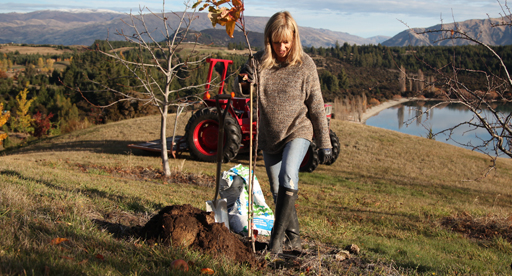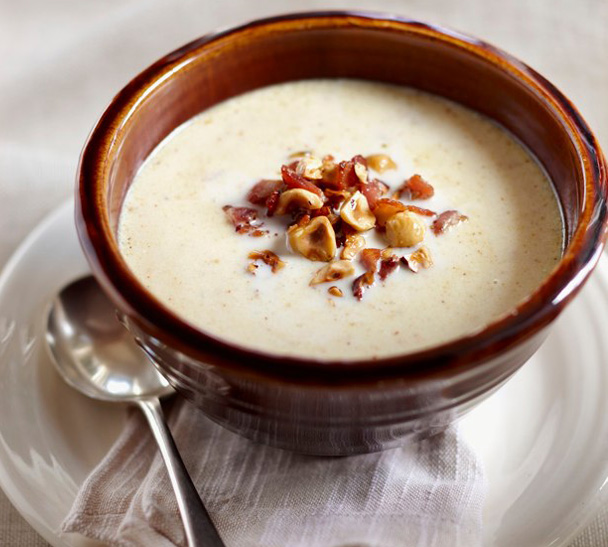
When it’s cold and stormy outside there’s nothing I like better than hunkering down with the fire roaring and a cup of tea at hand, working out my plan for the coming season’s garden. Give me a stack of seed catalogues, some garden books and magazines for design inspiration, a pencil and a big piece of brown paper I can spread out on the table and I’m in heaven. It’s such fun to map out a plan, work out the crop rotations and succession plantings and decide what new veg and flowers to try out in the upcoming season.
Shopping list
Even if you have a tiny vegetable garden space, it’s a good idea to practice some form of crop rotation, as this helps to prevent a build-up of pests and diseases and ensures you get the nutrient balance right for the different crops you are growing. For a guide to crop rotation check out my blog.
It may be freezing out there but, with the winter solstice now behind us and daylight hours on the wax rather than the wane, it feels like we are coming out the other side of winter’s dark tunnel. I can’t imagine living somewhere like northern Scandinavia and having months and months of almost total darkness, but I guess it comes down to what you’re used to. Now, feeling the light slowly expanding and filling out each day, there’s a sense that the new growing season is just around the corner. Somehow that brings a sense of urgency to the whole planning process, as gardening is about timing – miss the bus and you’ve potentially missed a whole season.
Even though July is our chilliest month, and the ground is way too cold to contemplate planting any spring crops outdoors, it’s a great time to plant new-season fruit trees while they are dormant. When planting, remember that fruit trees require a position in full sun. Use stakes to provide shelter from strong prevailing winds so your newly planted trees don’t rattle their roots. Wind can really distress the roots, especially while they are trying to get established, and if they get air in their roots from being too blown about it can kill them.
In the North Island, now is a really good time to get seeds started indoors. Come mid-July you’ll want your tomato seeds and other long-lead crop seeds germinating inside in a mini greenhouse – or fill a wooden tray or container with Tui Seed Raising Mix and plant your seeds in it. Either way, be sure to keep the soil well watered. As long as your mini greenhouse or seed trays are positioned somewhere light filled and warm, you’ll get a successful germination. For the lowdown on growing from seed check out my Tui Garden Project.
Frost-tender long-lead crops such as tomatoes, chillies, eggplant and cucumbers all need a good 10-plus weeks before they can be transplanted outdoors. You need to wait until all risk of frost has passed and the ground has warmed up enough – it needs to be above 11°C for anything to get growing.
It’s also worthwhile starting other quicker-growing spring vegetables from seed inside now, so they’re ready for transplanting in August. These include beetroot, spinach, rocket, spring salad leaves, Asian greens and snow peas.
Outside, provided your garden is frost-free, you can start planting strawberry plants. Use a light, free-draining mix with potassium to promote fruit and flower growth – try Tui Strawberry Mix. I like to mulch all around the plants and Tui Strawberry Straw does a good job here. In frost-prone areas it’s best to protect plants from the elements with a cloche or frost cloth or, if you think it’s too cold, wait a few weeks to plant.
Down south in Wanaka, I tend to run everything a good month or so later than if I were gardening in Auckland. I don’t start my seed trays until August and then I do all my transplanting in late October after Labour Weekend – or, if you go by the local lore, when I can’t see any snow on Mt Roy. Being inland and so far south, soil temperatures don’t start to lift until October.
To warm the cockles of your heart after you have been out tromping around the garden in the cold a hearty soup is in order. I like to roast off the cauliflower in this simple winter soup – roasting delivers a deeper flavour and the toasty oven smells bring a warming sense of comfort to the house…
Roasted Cauliflower and Blue Cheese Soup
Prep time: 10 mins
Cook time: 40 mins
Serves: 6
Ingredients
- 1 whole cauliflower, trimmed, outside leaves removed
- 2 tablespoons butter, melted
- salt and fine white pepper
- 6 cups vegetable stock or water
- 100g blue cheese, crumbled
- 3 tablespoons chopped parsley
- 2 cups milk
- ½ cup cream
- To serve (optional)
- ½ cup roasted hazelnuts, coarsely chopped
- 4 rashers streaky bacon, diced and cooked in a little oil until crispy
Method
- Preheat oven to 180˚C fanbake.
- Cut cauliflower into small florets and place in a roasting dish. Drizzle with butter and toss to lightly coat.
- Spread out in a single layer, season with salt and pepper and pour 1 cup of stock or water into the base of the dish. Roast for about 40 minutes until tender and just starting to caramelise around the edges.
- Purée cauliflower with its cooking juices until smooth then transfer to a pot; add the rest of the stock or water, blue cheese, parsley, milk and cream.
- Bring to a simmer; adjust seasonings to taste. Divide among serving bowls and garnish with crispy bacon and hazelnuts.
Read more of Annabel's guest blogs here
Post a comment
Annabel Langbein's July Garden Comments
Hi Annabel - this soup sounds great. You once gave a recipe for Golden Marmalade - are the skins left on or not please ?
Audrey Franklyn
Hi Audrey, we have checked on Annabel's website and can confirm the skins are left on. You can view the recipe and video of Annabel making the marmalade here: http://www.annabel-langbein.com/recipes/golden-marmalade/818/ Thanks, Jenna - Tui Team
jenna
Love the idea of pureed cauli - will definitely try this. Thank you for a great idea.
Shirley Pedersen